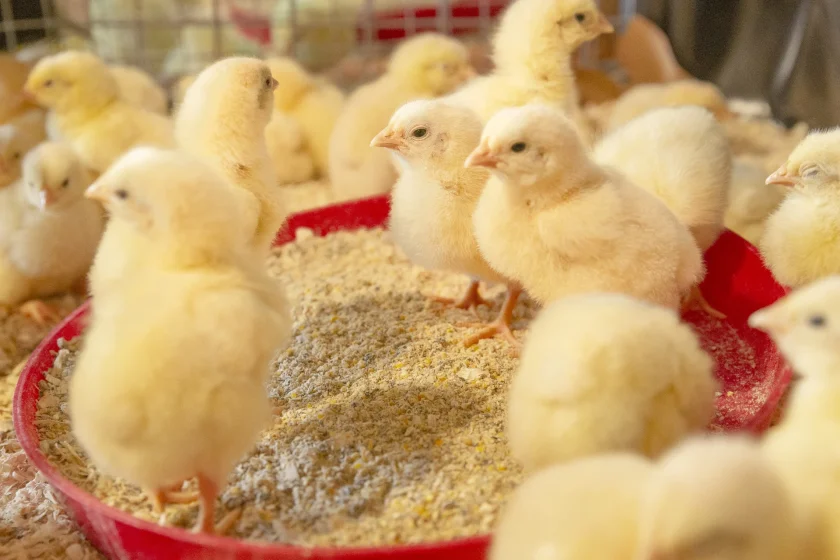Application of a full nutrient and energy matrix with phytase can maintain growth performance of broilers and reduce feed costs compared with a minerals matrix alone, found a research by Abiodun Bello and his team from Danisco Animal Nutrition & Health (IFF) and India’s Agrivet Research & Advisory.
The researchers evaluated the effect of stepwise application of a nutrient and energy matrix for a consensus bacterial 6-phytase variant (PhyG) to a corn-based diet, without or with xylanase-amylase-protease (XAP) supplementation.
Materials and methods
Day-old, Ross 308 males (2,400) were assigned to eight treatments (10 replicate floor pens per treatment) in a randomized controlled block design.
Diets were formulated in four phases and comprised:
- [1] nutritionally adequate control (PC)
- [2] negative control (NC1) reduced in Ca, digestible P and Na (by 0.22, 0.23 and 0.04 % points, respectively, vs. PC)
- [3] as NC1 but reduced in metabolizable energy (ME) (by 72 to 51 kcal/kg; NC2)
- [4] as [3] reduced in digestible amino acids (AA) (by ≤ 0.06 % points vs. PC; NC3)
- [5], [6] and [7] as [2], [3] and [4] supplemented with PhyG at 1,250 phytase units (FTU)/kg (NC1+PhyG, NC2+PhyG and NC3+PhyG, respectively)
- [8] as [7] reduced in ME (by 61 kcal/kg), supplemented with XAP (2,000 xylanase units/kg, 200 amylase units/kg and 4,000 protease units/kg; NC4+PhyG+XAP)
Results
Orthogonal polynomial contrasts revealed:
- linear and quadratic relationships (P < 0.05) between the degree of matrix applied and final (d 42) body weight (BW),
- overall average daily gain (ADG),
- average daily feed intake (ADFI),
- BW-corrected feed conversion ratio,
- d 21 tibia ash and tibia breaking strength.
These measures were incrementally impaired with increasing matrix severity through PC, NC1, NC2 and NC3.
Supplemental PhyG:
- increased (P < 0.05) overall ADG and ADFI above the level of the respective NC,
- and maintained growth performance, tibia ash, breaking strength and carcass weights comparable to PC.
Treatments NC3+PhyG and NC4+PhyG+XAP maintained all outcome measures at levels not different from the PC but with a lower estimated feed cost per kilogram BW gain than PC or NC1+PhyG (-0.039 USD/kg BW gain in NC3+PhyG vs. NC1+PhyG; P < 0.05).
Conclusion
- The application of dose-dependent reductions in the dietary content of digestible AA and ME on top of a reductions in minerals (Ca, digestible P and Na) to corn-soybean meal-based diets supplemented with PhyG phytase at 1,250 FTU/kg maintained broiler growth performance, bone and carcass characteristics at levels that were not different to those achieved by a nutritionally adequate, unsupplemented diet, over an entire growth cycle.
- Application of this ‘full matrix’ with PhyG also enabled a feed cost reduction compared with application of a minerals matrix alone.
- Supplementing XAP on top of the phytase with an additional reduction in ME (and digestible AA) similarly maintained bird responses comparable to the nutritionally adequate diet but conferred numerically greater feed cost and sustainability savings compared to PhyG alone.
- These findings provide confidence over the application of a ‘full matrix’ for PhyG phytase, with or without XAP, in corn-soybean meal-based diets.

